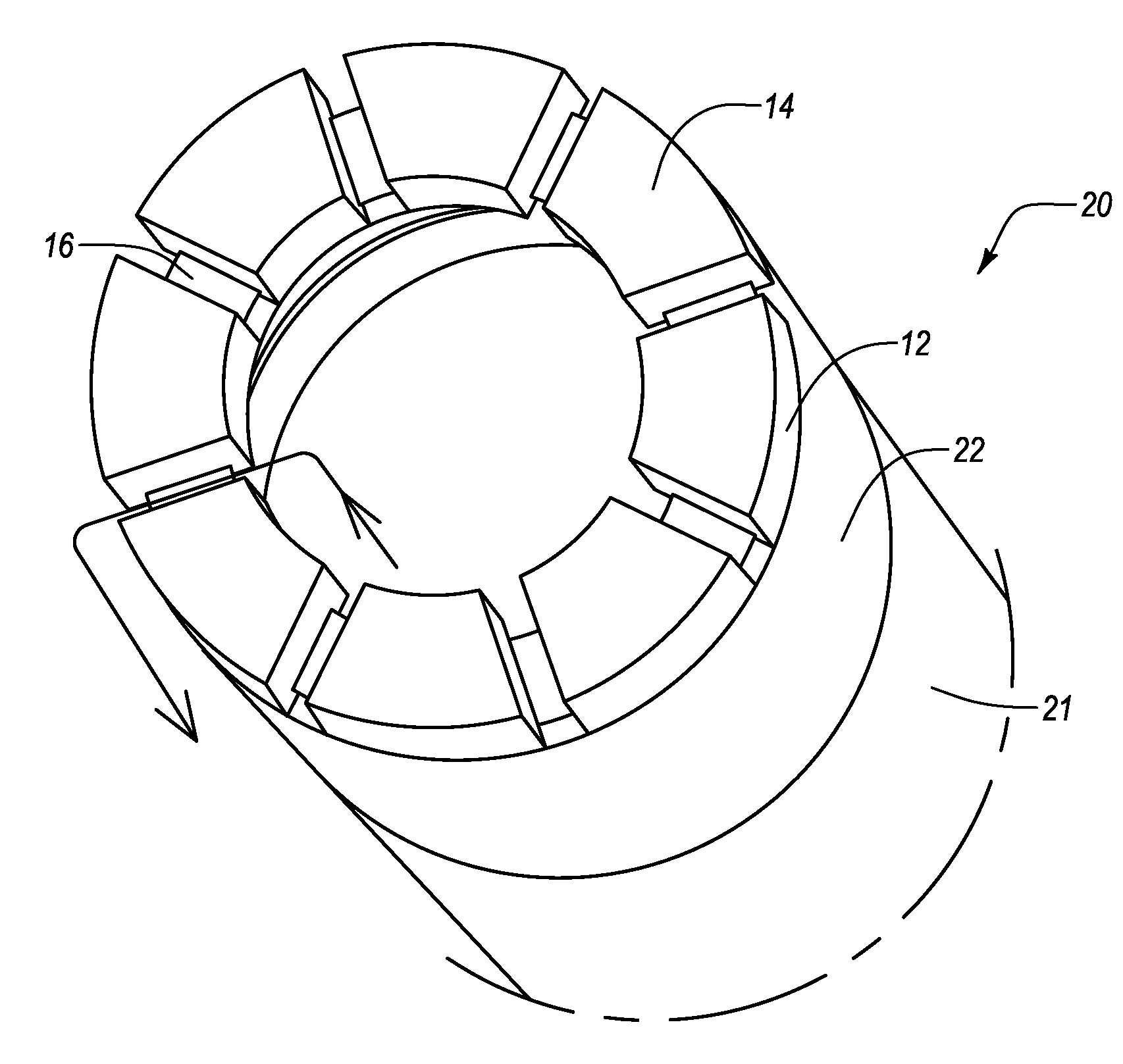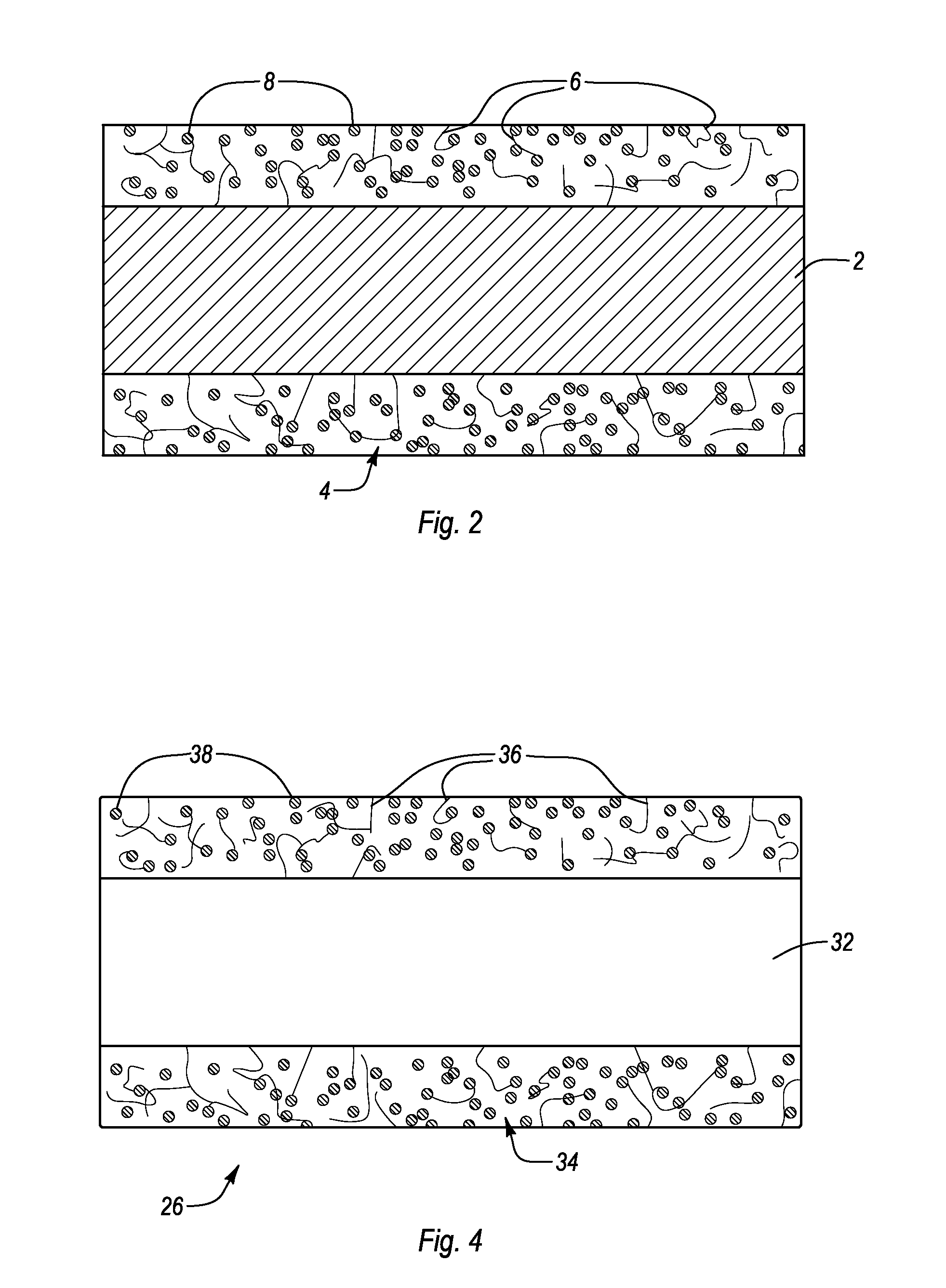Methods of forming and using fiber-containing diamond-impregnated cutting tools
a technology of diamond-impregnated cutting tools and fibers, which is applied in the field of cutting tools, can solve the problems of high cost, time-consuming, dangerous, and inability to replace diamond-impregnated cutting tools, and achieves the effects of reducing the cost of replacement, and improving the cutting performance of tools
- Summary
- Abstract
- Description
- Claims
- Application Information
AI Technical Summary
Benefits of technology
Problems solved by technology
Method used
Image
Examples
example
[0049]In one example of a comparison between a conventional diamond-impregnated cutting tool (one lacking fibers) and a fiber-containing diamond-impregnated cutting tool, two sets of substantially similar drill bits were manufactured. In this comparison, the first set of drill bits contained no fibers and the second set was reinforced with carbon fibers. Each drill bit was then tested and the following properties were measured.
[0050]Penetration Rate: The average penetration rates of the first set of drill bits ranged from about 30 to about 40 meters per shift. Nevertheless, with the second set of fiber-reinforced bits, the drillers consistently achieved about 50 meters per shift. This equates to an increase in penetration rate of about 25% to about 67%.
[0051]Bit life: The average bit life of the first set of drill bits was 64 meters. Conversely, the average bit life of the second set of drill bits was about 104 meters. This equates to an increase in bit life of about 60%.
PUM
| Property | Measurement | Unit |
|---|---|---|
| diameter | aaaaa | aaaaa |
| diameter | aaaaa | aaaaa |
| diameter | aaaaa | aaaaa |
Abstract
Description
Claims
Application Information
 Login to View More
Login to View More - R&D
- Intellectual Property
- Life Sciences
- Materials
- Tech Scout
- Unparalleled Data Quality
- Higher Quality Content
- 60% Fewer Hallucinations
Browse by: Latest US Patents, China's latest patents, Technical Efficacy Thesaurus, Application Domain, Technology Topic, Popular Technical Reports.
© 2025 PatSnap. All rights reserved.Legal|Privacy policy|Modern Slavery Act Transparency Statement|Sitemap|About US| Contact US: help@patsnap.com



